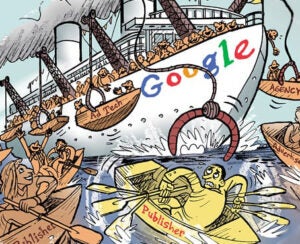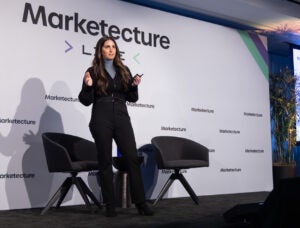As brands flee the open marketplace, publishers like The New York Times are positioned to scoop up their programmatic spend.
The Times’ programmatic strategy has long catered to marketers who value its context. It views programmatic as a way to transact, not a way to secure inventory inexpensively. And more marketers want to use its pipes to ensure they don’t appear next to extremist content or fake news.
“We have clients going from 300, 400, 500 partners to 20 partners,” Steve Carbone, MediaCom’s managing director and head of digital and analytics, said Monday at a “Programmatic NewFront” event held by the Times after its main-stage NewFront.
Brands understand they might end up paying 20% or 30% higher CPMs for fraud-free, brand-safe, viewable inventory, Carbone said.
“It’s not just about getting the cheapest rate,” he added. “We don’t want [clients] overpaying, but we want quality inventory and fewer partners.”
As the buy side grapples with paying more for inventory, sellers like the Times are thinking about how to make their advertisers’ programmatic dollars work with at least some of the efficiency they’ve come to expect from platforms.
“Being one of those 20 [partners], we want to think about what the campaign goals are, whether it’s viewability or brand safety, and provide a level of transparency and communication to clients,” said Sara Badler, director of programmatic advertising for the Times.
Brands, in turn, can’t evaluate a platform and private marketplace with the same metrics because the platform has an edge.
“It’s tricky when you get into the business of competing with a platform as a publisher,” Badler said. “We don’t have an algorithm. We are a publisher and create brilliant content, and that’s what you’re paying for.”
Despite some brands yanking media from Google sites, Carbone doesn’t see premium publishers being able to completely replace a platform buy.
“The problem is the scale,” Carbone said. “When you are trying to achieve the aggressive KPIs our packaged-goods clients are trying to achieve, we need them [Google and Facebook] in the marketplace. We need their scale, we need their audiences and we need that inventory to be there at that price in order to get clients the exposure that they need.”
The call for programmatic marketplaces to be more brand-safe could end up benefiting the Times in another way. It still regularly runs into brands that claim to be buying Times inventory in places where it doesn’t exist.
Even if brands were running a curated whitelist – as, for example, JP Morgan Chase did – that brand could still end up buying spoofed inventory representing itself as the Times.
“We don’t have any video inventory on the open exchange,” Badler said. “If a brand is saying they access our inventory, no, you don’t unless you work with someone on our team.”
As the wasted inventory on the open exchange goes away, publishers like the Times might start to compare to platforms more favorably.
“The entire market has been taught to buy in-banner video at a $5 CPM,” said Andrew Casale, CEO of Index Exchange. “We have that baggage, where we have taught the market to buy nonpremium.”
The supply chain is still too murky, Casale added.
“We’ve witnessed these slip-ups for years,” he said, referencing the brand safety problems brands face with programmatic buys. “It means the [brand] wallet was somewhat diluted and went toward a venue that has no production cost and leached that revenue away from what should have been going toward content and experiences.”














